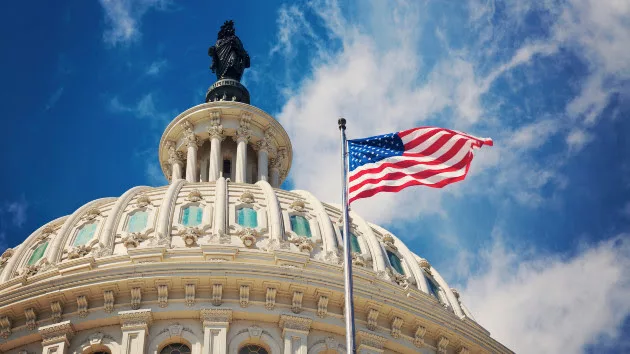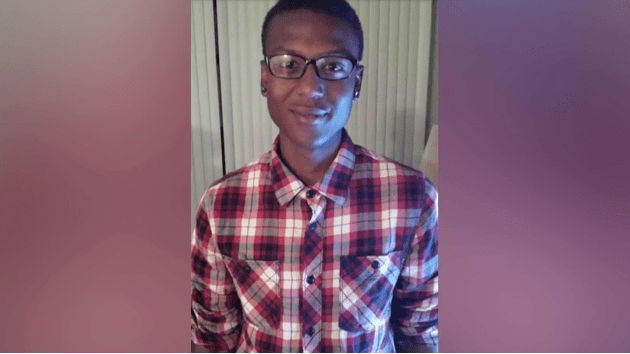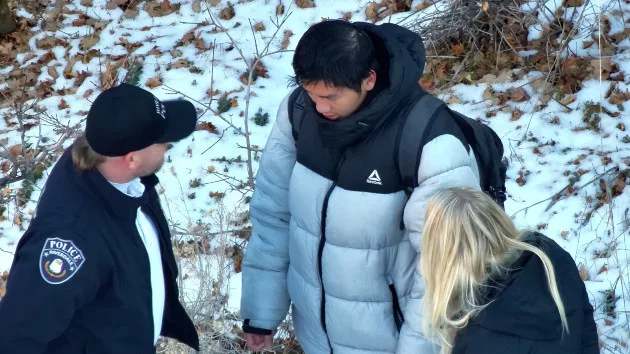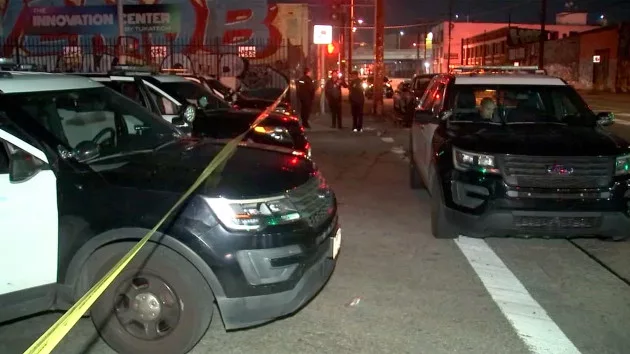
(WASHINGTON) — The organizers of the rally that preceded the Jan. 6 attack on the U.S Capitol actively concealed information from the National Park Service that would have materially changed the security plans at the event, according to a new report from the Office of Inspector General for the U.S. Interior Department.
The 45-page report, issued nearly three years after the Jan. 6 attack, focused primarily on the preparations for the “Save America” rally by members of the National Park Service and U.S. Park Police, which fall under the Interior Department.
“This report adds important information and context to the historical record of the events leading up to and occurring on that day,” DOI Inspector General Mark Lee Greenblatt said in a statement to ABC News.
Focusing on the Interior Department’s actions leading up to and including the day of the Capitol attack, the report found that U.S. Park Police followed all relevant policies on Jan. 6, while identifying failures by both the National Park Service and event organizers.
“We found no evidence that the USPP failed to exercise its law enforcement responsibilities in accordance with policy on January 6 at both the Ellipse and the U.S. Capitol,” the report said.
The report found that the National Park Service failed to review safety documents, inspect the site of the event, or notify the public about banned items at the Ellipse, while officials with Women for America First, which helped organize the rally, withheld information about then-President Donald Trump’s attendance at the event and the planned march to the Capitol.
Much of the information in the report has been previously detailed by the House Jan.6 committee and by the Capitol Police’s internal watchdog, which issued its own report.
‘Basically she lied to all of us’
The report found that the organizers from Women for America First failed to provide information about Trump’s likely attendance at the rally and that they actively concealed information about the plans to follow the event with a march to the Capitol, despite a clear request for that information from the National Park Service.
Organizers first raised the possibility that Trump might attend the event on Dec. 31, despite planning documents from the previous day including items such as “POTUS Audio Package” and “POTUS Lighting Package.”
“The park ranger for President’s Park told us that, even though WFAF would not confirm it, ‘that’s when [she] knew’ the President was going to be at the demonstration,” the report noted.
The National Park Service eventually received confirmation from the Secret Service on Jan. 1 that Trump would attend the rally.
The report added that Women for America First “intentionally failed to disclose information” about the planned march on the Capitol. During a Dec. 29 phone call with a park ranger, event planners explicitly said that WFAF did not plan to march to the Capitol on Jan. 6, the report said. Permits revised as late as Jan. 5 stated that WFAF would “not conduct an organized march from the Ellipse at the conclusion of the rally.”
At the same time, evidence reviewed by the OIG found that WFAF expected Trump to call for a march.
“POTUS expectations are intimate and then send everyone over to the Capitol,” White House liaison texted a WFAF contractor on Jan. 3, according to the report.
“This stays only between us, we are having a second stage at the Supreme Court again after the ellipse. POTUS is going to have us march there/the Capitol … It can also not get out about the march because I will be in trouble with the national park service and all the agencies but POTUS is going to just call for it ‘unexpectedly,'” a WFAF representative texted on Jan. 4 to MyPillow CEO Mike Lindell, who was a potential speaker at the event.
However, a park ranger said that the WFAF representative “was just adamant there was gonna be no march,” according to the report.
Shown the text messages during the OIG investigation, a permit specialist involved in the planning process came to the conclusion that the WFAF lied in the process of obtaining their permit.
“We asked [the WFAF representative] repeatedly if she was going to do a march … So, um, basically she lied to all of us,” the permit specialist told investigators, per the report.
The report added that the permits would not have been denied had the planners disclosed the march; however, the information would have prompted officials to increase security near the planned march and to coordinate with nearby jurisdictions and law enforcement.
“NPS officials stated that, had they known there would be a march from the Ellipse to the U.S. Capitol, they would have requested information from WFAF regarding the planned march route and expected time of the march and coordinated with law enforcement and other relevant officials,” the report said.
‘Violence is almost certain’
Despite the warning signs about potential violence during the event, the report concluded that the National Park Service, without evidence that the event represented a clear and present danger, lacked any evidence to deny permits to the event planners. Indeed, during no point in the planning process did the National Park Service consider denying or revoking the permits on safety grounds, the report said.
Federal officials reached that conclusion despite a flurry of intelligence reports in the lead-up to the rally that offered seemingly contradictory information about the threat of violence at the Capitol.
As plans were underway for the rally in late December, officials with the Park Police’s intelligence arm issued an intelligence report about the potential for violence during various events planned for Jan. 6.
“Groups with diametrically opposed beliefs and ideologies will both be present, and if these groups are allowed to come into close contact with each other, violence is almost certain,” the intelligence report warned.
A Jan. 4 report from the Park Police noted the potential for sporadic violence but found “no indication of any acts of violence being pre-planned by any specific individual(s) or groups,” according to the OIG report.
A communication between the Capitol Police and Park Police sent the next day found that the chance of a threat to the Capitol on Jan. 6 was “highly improbable” or “remote.”
When the FBI circulated a report on Jan. 5 about calls on social media for “war” on Jan. 6, a liaison officer with the FBI’s Joint Terrorism Task Force failed to share the report with the Parks Police, instead sharing a later email summarizing the report.
“The summary stated that, although no threats were noted, the situational information report was shared with partner agencies for their awareness,” the OIG report said.
National Park Service failures
The report found that the National Park Service failed to comply with a number of procedural steps ahead of the demonstration, potentially endangering attendees and limiting the ability to seek reimbursement for damages following the event.
While a National Park Service employee photographed the Ellipse as part of a site survey on Jan. 2, the employee eventually lost the photos after failing to back them up to his computer, the report said. Though the National Park Service identified over $230,000 in damages due to the event, without the photos the government could not pursue reimbursement from WFAF due to insufficient evidence.
The National Park Service also failed to conduct a site inspection of the Ellipse, review fire and life safety documentation, and do the fire and life safety inspections at the Ellipse, the report said.
“These failures violated NPS policy, and NPS officials acknowledged that the absence of safety inspections put the public and NPS resources at risk,” the report stated.
Though the National Park Service prohibited multiple items from being brought into the event — including large bags, body armor and weapons — the Park Service also failed to provide public notice about the prohibited items, according to the report.
“We cannot speculate on the extent to which providing this information may have affected the behavior of demonstration attendees, but it is clear that many members of the public brought items that were prohibited by the NPS’ record of determination,” the report said.
After hundreds of bags were abandoned by rally attendees, law enforcement was unable to sweep all of them for explosives, according to the report.
“USSS officers and demonstration volunteers collected many of the abandoned bags and placed them into piles on Constitution Avenue, and USPP K-9 officers then swept the bags for explosives. The officers said that they were unable to sweep all the bags because there were so many, and some of them were buried under piles of other bags,” the report said, referring to the U.S. Secret Service and U.S. Park Police.
The report also said that while law enforcement screened 28,000 people to enter the event — finding items like knives, pepper spray, gas masks, body armor, and tasers — other people avoided the screening and lingered on the National Mall with prohibited items including an AR-15 assault rifle and a pitchfork.
Copyright © 2023, ABC Audio. All rights reserved.





